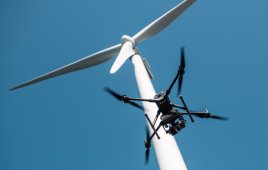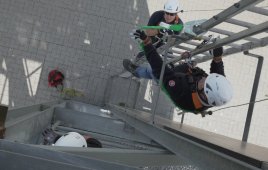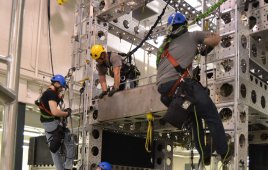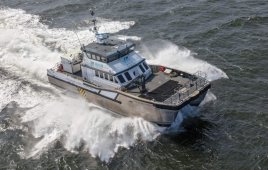Article by Jason Junkers, Director of Operations at HYTORC Wind, www.hytorcwind.com
In the world of industrial maintenance there are three priorities above all else: safety, quality, and schedule. Depending on whom you talk to, one may take precedence over another. However, for the person performing the work, safety is always the number one consideration. While demand for precision and accuracy increase as time becomes more valuable, it is especially important to keep bolting systems simple to use, which ensures correct use and prevents accidents.

The Twin Torque System from Hytorc makes for fast and simple maintenance on wind turbine yaw brakes.
Bolting systems have become more advanced in recent years, but some that may work well in labs do not see the same results when used in the field. HYTORC makes every effort to maintain simplicity while developing innovative bolting systems. A system that is faster and more accurate in a lab must remain simple and intuitive enough for users to operate safely in the field. Advantages in speed and accuracy are quickly negated when a safety incident stops the job completely.
To ensure a safe job with the best results, we recommend on-site training for everyone that will be involved in the job. A reliable, bolting-system manufacturer will provide this training for free upon delivery of the equipment and as requested before future jobs. My company has teamed up with OSHA and the ASME to ensure that safe bolting practices are taught alongside other industrial safety courses. In combination with the training at many wind-turbine-technician schools, these programs can help significantly reduce jobsite injuries.
Some of the largest areas of concern in industrial bolting are pullers –highly pressurized hydraulic tensioning systems –and the pinch points of hydraulic torque systems. Hydraulic tensioners can be pressurized to 30,000 psi. So if the puller is worn or not correctly threaded onto the bolt, it can literally propel itself like a rocket. With hydraulic torque wrenches, the reaction arm and backup wrenches create pinch points that can sever a finger or worse if the operator is not extremely careful during operation. We address these issues through use of safety devices such as the safety washer, which lets a torque wrench operate without reaction arms and backup wrenches so there are no dangerous pinch points.
Additional challenges come from working in the confines of a wind turbine or on challenging exterior jobs. For these, we recommend specialized fixtures that make tool placement simple and eliminate the need for adjustment of reaction fixtures or backup wrenches. Our company has developed fixtures for nearly every application in every model turbine to ensure a safe solution is always available. Simply fit the tool and fixture on the job and then operate it with remote control at a safe distance. Even when all safety precautions are followed, it is always advisable to use a system that can be operated remotely, to get the operator out of harm’s way in the unlikely event of a malfunction.
Regardless of the system used, job safety can always be maintained as long as everyone follows the safety procedures issued by their employer and the manufacturer of the bolting systems being used. Regular training on the equipment is highly recommended and a pre-job equipment inspection and safety refresher will also add safety. As always, it is important to wear the right personal protective equipment. Safety glasses, gloves, hard hats, and steel-toe boots prevent many dangerous injuries that can occur on the job. WPE
Filed Under: Safety




